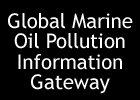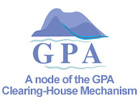|
|
|
Bucharest
Convention + Black Sea Commission
The
Convention
on the Protection of the Black Sea against Pollution (Bucharest
Convention) was adopted in 1992 and entered into force in 1994.
It includes a basic framework of agreement and three specific
Protocols. The implementation is co-ordinated by a Commission
with a permanent secretariat in Istanbul (the Istanbul Commission).
Protocols to the Convention include:
The
Black Sea
Commission (Commission for the Protection of the Black
Sea against Pollution, BSC - also called the Istanbul Commission)
was established following the provisions of the Bucharest
Convention. Its secretariat is located at Istanbul. A Black
Sea Activitity Centre for Environment and Safety Aspects of
Shipping has been established in Bulgaria, one on Integrated
Coastal Zone management is found in the Russian Federation,
one on Land-based Sources of Pollution in Turkey, and one
on Pollution Monitoring and Assessment in Ukraine. The Commission's
Advisory Group on Environmental Safety Aspects of Shipping
is presently developing a Draft Black Sea Regional Contingency
Plan (part 1, on oil pollution and management of dredged spoils.
|
1993
Odessa Declaration, 2002 Sofia Declaration
The
1993 Ministerial Declaration on the Protection of the Black
Sea (Odessa
Declaration) was
signed by all six Ministers of the Environment in Odessa in
April 1993 in order to set the goals, priorities and timetable
needed to bring about environmental actions. The document is
based largely upon the Agenda 21.
In
t he 2002 Declaration of the Ministers of Environment of the
Contracting Parties of the Bucharest Convention (Sofia
Declaration), the Ministers declare, inter alia,
their "joint political will towards joint action aiming
at the further improvement of the Black Sea and the state
of its marine and coastal ecosystems, by way, among other
things, taking all appropriate measures to achieve good water
status of all the water bodies in the region". The Ministers
also declare their commitment "to actively support the
implementation of the Black Sea Ecosystems Recovery Project."
|
Black Sea Memorandum of Understanding on Port State Control
The
Black Sea MoU
on Port State Control was signed in 2000 by six Black Sea
states (Bulgaria, Georgia, Romania, Russian Federation, Turkey,
and Ukraine) with the common understanding of main principles
for Port State Control. The geographical scope of the Black
Sea MOU region consists of ports located on Black Sea coastline.
The purpose of establishing and maintaining an effective system
of Port State Control is to ensure that, without discrimination
as to flag, foreign merchant ships visiting the ports of its
State comply with the standards laid down in the relevant international
instruments.
|
Black
Sea Environmental Programme (BSEP) • Strategic Action Plan
for the Rehabilitation and Protection of the Black Sea •
Black Sea TDA + Black Sea Ecosystems Recovery Project (and DABLAS
Task Force)
In
order to make an early start to environmental action and to
develop a longer-term Action Plan, the GEF-funded Black Sea
Environmental Programme (BSEP) was launched in 1993. It is now
completed. The most important achievements of the BSEP were
the Transboundary
Diagnostic Analysis (TDA) and the regional Strategic
Action Plan for the Rehabilitation and Protection of the Black
Sea.
The
Strategic Action Plan for the Rehabilitation and Protection
of the Black Sea was completed and adopted in 1996. The aim
of the Action Plan is to "enable the population of the
Black Sea region to enjoy a healthy living environment in
both urban and rural areas, and to attain a biologically diverse
Black Sea ecosystem with viable natural populations of higher
organisms, including marine mammals and sturgeons, and which
will support livelihoods based on sustainable activities such
as fishing, aquaculture and tourism in all Black Sea countries."
In
the Action Plan, five major problems affecting the Black Sea
environment are outlined:
- Input
of certain pollutants, notably nutrients leading to eutrophication;
- Inputs
of insufficiently treated sewage resulting in the presence
of microbiological contaminants threatening the public health
and posing a barrier to the development of sustainable tourism
and aquaculture;
- Inputs
of harmful substances and especially oil products;
- Introduction
of exotic species;
- Inadequate
resource management and use posing a serious risks of losing
valuable habitats and landscape and ultimately, the biological
diversity and productivity of the Black Sea ecosystem.
Concerning
shipping the Action Plan specifies that in order to comply with
MARPOL 73/78 port reception facilities for garbage should have
been installed by 1999 and for oil by the year 2000. With regard
to dumping and waste management, a total ban on the disposal
of municipal garbage in marine, shoreline and estuarine areas
should have been imposed by 1996 and fully enforced by 1999.
The Black Sea countries should also co-operate in developing
and implementing environmentally sound waste management policies.
The
overall aim of the new, six-year (2000-2006) GEF-funded Black
Sea Ecosystem Recovery Project (with a number of project
partners, including the Black Sea Commission, UNDP, UNEP,
WHO, and EU Tacis) is to improve ecosystem health of the Black
Sea by reducing inputs of nutrients and hazardous substances
from landbased activities. The project has its own Project
Implementation Unit. A Memorandum of Understanding has been
signed between the Black Sea Commission and the International
Commission on the Protection of the Danube River (ICPDR),
and a joint task force (the DABLAS Task Force) has been established.
See
also information on the Black
Sea Strategic Action Plan on Blackseaweb. See also information
on the Black Sea Environmental Programme on Blackseaweb: General
information, BSEP
Phase I, and BSEP
Phase II.
|
Danube
River Protection Convention
The
1994 Convention
on Co-operation for the Protection and Sustainable Use of the
River Danube (Danube River Protection Convention) is aimed
at achieving sustainable and equitable water management in the
Danube basin. The signatories have agreed on "conservation,
improvement and the rational use of surface and ground waters
in the catchment area, control of the hazards originating from
accidents involving substances hazardous to water, floods and
ice-hazards, and to "contribute to reducing the pollution loads
of the Black Sea from sources in the catchment area". See also
the International
Commission for the Protection of the Danube River. (ICPDR).
 See also the Memorandum
of Understanding between the ICPDR and the Black Sea Commission,
and their joint task force (DABLAS Task Force)
See also the Memorandum
of Understanding between the ICPDR and the Black Sea Commission,
and their joint task force (DABLAS Task Force)
|
Dnipro
Basin Environment Programme
Dnipro
Basin Environment Programme is a GEF project designed to
develop a programme of measures and their respective implementation
mechanisms in order to sustainably protect Europe's third largest
river, the transboundary Dnipro, shared between Belarus, Ruusia
and Ukraine, and thereby contribute to the protection of regional
and global international waters. The long-term objectives of
the project are to remedy the serious environmental effects
of pollution and habitat degradation inthe Dnipro River Basin
and to ensure sustainable use of its resources, and to protect
biodiversity in the basin. The project includes seven specific
objectives:
- Create
a transboundary management regime and co-ordinating body;
- Assist
countries in the formulation, review and endorsement process
of a Strategic Action Programme (SAP);
- Improve
financial/legal/operational mechanisms for pollution reduction
and sustainable resource use;
- Formulation
of National Action Plans by Inter-ministerial Committees;
- Improve
conservation of biodiversity in the Dnipro River Basin;
- Enhance
communication among stakeholders and encourage public awareness
and involvement in addressing the problems of the Dnipro
Basin; and
- Build
capacity for SAP implementation.
A Transboundary
Diagnostic Analysis (TDA) was published in 1997 and included
definition of priority actions of further co-operation between
GEF and the countries-participants.
A
Programme Management Unit has been set up in Kiev, Ukraine.
|
Organisation
on Black Sea Economic Cooperation
According
to the Charter of the Organisation
on the Black Sea Economic Co-operation (BSEC), member countries
should co-operate with the aim of utilizing more effectively
their human, natural and other resources for attaining a sustained
growth of their national economies and the social well-being
of their peoples. Members shall cooperate in a number of areas,
including energy, transport, and environmental protection. See
the BSEC Working group on Environmental Protection. |
Black
Sea NGO Network
The
Black Sea NGO Network
(BSNN) was established in 1998. It is registred as a regional
idependent, non-political, non-profit association of NGOs from
all Black Sea countries (Bulgaria, Georgia, Romania, Russia,
Turkey and Ukraine.) The BSNN members, currently 54, are brought
together by the common concern for the decreasing environmental
quality of the Black Sea and the need for the adoption of democratic
values and practices in the Black Sea countries that follow
the ideals of sustainability.
The BSNN mission is"to contribute to the protection and
rehabilitation of the Black Sea, including the Azov Sea, and
to the sustainable development of the Black Sea countries through
increased participation of NGOs, governments, businesses and
other institutions, as well as the general public".
|

|
|


